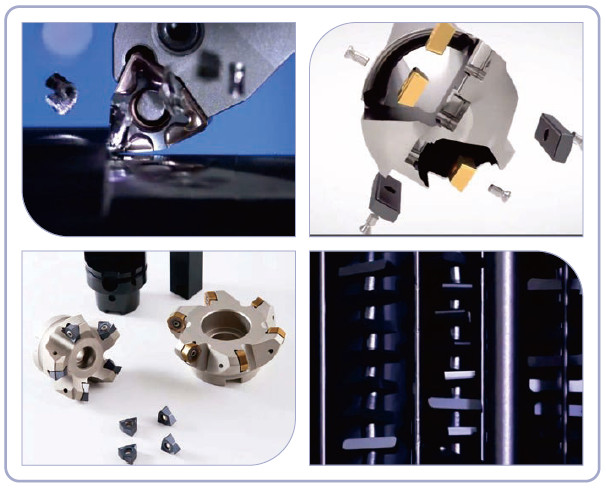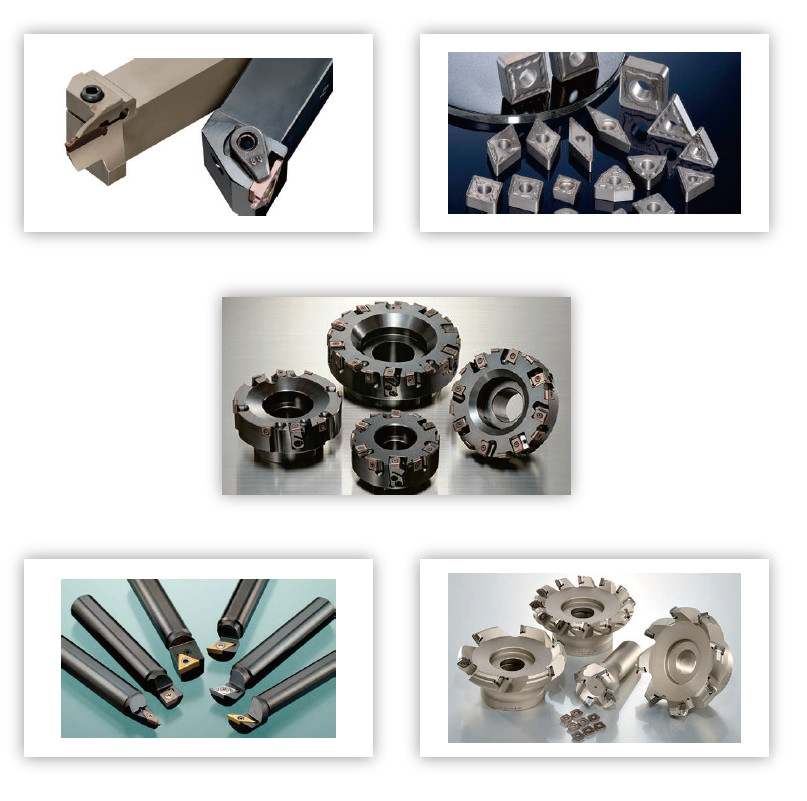The cutting process accounts for about 90% of the machining workload. The tool is the "tooth" of the industrial machine tool, which directly affects the processing level of the manufacturing industry. Cutting refers to the cutting of excess material from the workpiece surface, to ensure that the workpiece geometry, dimensional accuracy, surface quality and other aspects of the design requirements of the machining method, accounting for about 90% of the whole machining workload. Cutting is usually achieved by cutting machine tools, and the tool is the key consumable material, as the "teeth" of industrial machine tools, its quality directly affects the production of machinery manufacturing technology level, production efficiency and product quality. Cutting tools upstream for raw material suppliers, downstream used in major manufacturing industries. Take the most mainstream carbide tool as an example, according to the processed materials can be divided into: steel, stainless steel, cast iron, non-ferrous metal, heat-resistant alloy, hardened steel, etc. Upstream for the corresponding raw materials (tungsten carbide, cobalt powder, tantalum niobium solid solution, etc.) manufacturers, the downstream application field is concentrated in the manufacturing industry, mainly used in automobile and motorcycle, machine tools, general machinery, mold, engineering machinery and other fields, aerospace, military, medical machinery and other fields also provide a broader technical application and transformation space for carbide tools.
What are the characteristics of carbide cutting tools?
1.high hardness: Carbide tool is made of carbide with high hardness and melting point (known as hard phase) and metal binder (known as binding phase) by powder metallurgy method, its hardness is 89 ~ 93HRA, much higher than high speed steel, at 5400C, the hardness can still reach 82 ~ 87HRA, and high speed steel room temperature hardness (83 ~ 86HRA) the same.
2. Bending strength and toughness: the bending strength of ordinary hard alloy is in the range of 900 ~ 1500MPa. The higher the content of metal binding phase, the higher the bending strength. When the binder content is the same, YG(WC-Co). The strength of the alloy is higher than YT(WC-Tic-Co) alloy, and the strength decreases with the increase of TiC content. Hard alloy is a kind of brittle material, its impact toughness at room temperature is only 1/30 ~ 1/8 of HSS.
3. Good wear resistance. The cutting speed of carbide tool is 4~7 times higher than that of high speed steel, and the tool life is 5~80 times higher. Manufacturing mold, measuring tools, life than alloy tool steel 20 ~ 150 times higher. Can cut 50HRC or so hard material.


Post time: Dec-29-2022
